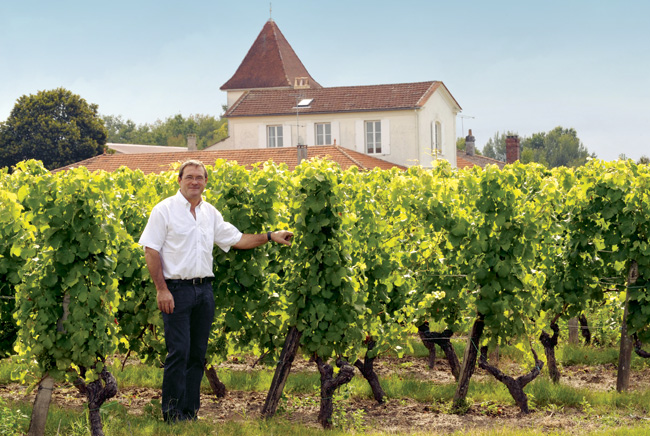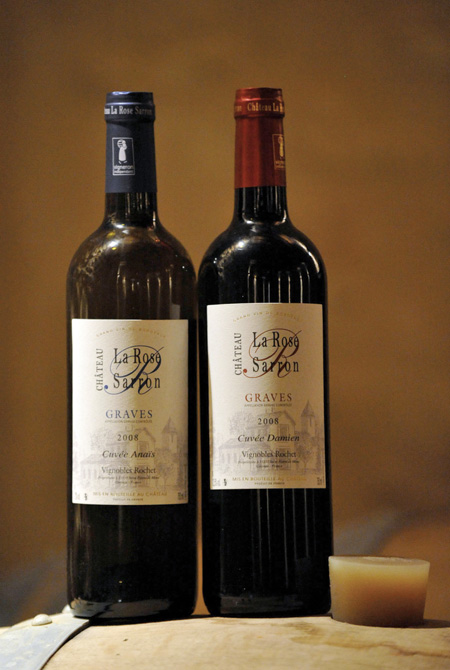Winegrowers’ portraits Saint-Pierre-de-Mons
Château La Rose Sarron
How to revive a terroir
formerly recognized as excellent …

Philippe Rochet As from the 20th century, the village of Saint-Pierre-de-Mons, in the south of the Graves region, was famous for its white wines. Dry white, but also sweet white wine who could until 1939 claim for the appellation Sauternes. Philippe Rochet, owner of the château, found in the 1868 edition of the Féret guide, the Bible of Bordeaux wines, the distinction Cru Bourgeois Artisan for the quality of the white wines.
History did not preserve this distinction and the property disappeared, its vineyards also. It was not until 1986, knowing the past and observing the quality of the terroir, that on this beautiful hilltop of gravel, clay or sometimes silt soil, the vineyard is replanted to craft red wines and, on the gravelly-siliceous parts, with Sauvignon and Sémillon who will produce the whites in the spirit of the former grand wines.
The name of the estate, La Rose Sarron, shows evidence of the historical presence of vines, the word “sarrot” evoking the cellar master’s apron and the rose reminding the rosebushes at the end of the rows of vines, presaging the unfortunate arrival of oidium.
After the plantation and restructuration of the vineyard, which now totals 11 hectares in white and 29 in red, the property takes a new dimension thanks to big works in 2008: vathouse, barrel storehouse, storage buildings … Investments to bring out even more the potential of the domain, but also to refine the plot networking and to create two cuvees: Anaïs and Damien, the first names of Philipe Rochet’s children.
Stemming from 3 selected hectares of 60% Sémillon and 40% Sauvignon for Anaïs, a white wine aged in barrels with cold pellicular maceration allowing the aromas of fruits to be more expressive. The cuvee Damien, red this time, with 50% Cabernet and 50% Merlot, undergoes a malolactic fermentation and élevage in barrels without however it dominates the wine.
Both two aptly named cuvees, knowing that Philippe’s children will take over the reins little by little for the production of Château La Rose Sarron Graves wines and the marketing on trade fairs like Versailles, as well as the participation in the Competition for the Best French Wines and Spirits in Asia where the 2012 was awarded the bronze medal, or in the Trophy of the Grand Crus of Graves which, in 2013, rewarded the vintages 2010 in red and 2011 in white.
A fair return on the ground work undertaken about thirty years ago … a trade of patience and perseverance.
Florence Varaine
— www.la-rose-sarron.com — 

